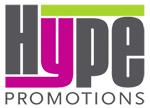Building brand recognition in today’s competitive marketplace requires strategic thinking and consistent execution. Promotional product campaigns offer Australian businesses a tangible way to connect with their audience while creating lasting impressions that traditional advertising simply cannot match. When executed properly, these campaigns transform everyday items into powerful brand ambassadors that work around the clock to promote your business.
The key to successful brand recognition lies in understanding that promotional products create physical touchpoints between your brand and potential customers. Unlike digital advertisements that disappear with a click, promotional items remain in recipients’ hands, offices, and homes for months or even years. This extended exposure creates multiple opportunities for brand recall and recognition.
For Brisbane businesses and companies across Australia, promotional product campaigns represent one of the most cost-effective marketing strategies available. The average promotional product generates 1,400 impressions over its lifetime, making it significantly more economical than traditional advertising methods on a per-impression basis.
Understanding the Psychology Behind Promotional Product Marketing
The effectiveness of promotional products stems from fundamental psychological principles that govern human behaviour and memory formation. When someone receives a tangible gift, their brain activates the reciprocity principle—a powerful psychological trigger that creates a sense of obligation to return the favour. This emotional response forms the foundation of successful promotional product campaigns.
Brand recall mechanisms work differently with physical items compared to digital or print advertisements. The tactile experience of handling a promotional product creates multiple sensory memories that strengthen brand recognition. Research shows that people remember 65% of visual information three days later, but when combined with tactile experience, retention rates increase to 90%.
The emotional connection formed through promotional products extends beyond the initial gift-giving moment. Recipients develop positive associations with brands that provide useful, high-quality items. This emotional bond influences purchasing decisions and brand loyalty in ways that traditional advertising cannot replicate.
Neuroscience research reveals that promotional products activate the brain’s reward centres, releasing dopamine and creating positive feelings associated with the brand. These neurochemical responses contribute to stronger brand recognition and increased likelihood of future engagement with the company.
Strategic Planning for Your Promotional Product Campaign
Successful promotional product campaigns begin with clear objective definition and thorough strategic planning. Before selecting products or designing artwork, businesses must establish specific, measurable goals that align with their broader marketing objectives. Whether the aim is increasing brand awareness, generating leads, or strengthening customer relationships, these objectives will guide every subsequent decision.
Target audience analysis forms the cornerstone of effective campaign planning. Understanding your audience’s demographics, preferences, lifestyle, and professional needs ensures that selected promotional products will resonate with recipients. A tech company targeting millennials requires different promotional strategies than a construction firm serving trade professionals.
Budget allocation requires careful consideration of both product costs and distribution expenses. Successful campaigns balance quality with quantity, ensuring that promotional items reflect positively on the brand while reaching sufficient numbers of potential customers. The most effective approach often involves investing in fewer, higher-quality items rather than distributing large quantities of low-value products.
Timeline development must account for production lead times, shipping schedules, and campaign launch dates. Most promotional products require 2-4 weeks for production and customisation, with additional time needed for quality control and distribution planning. Seasonal campaigns and trade show deadlines require even more advance planning to ensure timely delivery.
Integration with overall marketing strategy ensures that promotional product campaigns complement and reinforce other marketing efforts. Consistent messaging, visual branding, and timing coordination across all marketing channels amplify the impact of promotional products while creating cohesive brand experiences for customers.
Choosing the Right Promotional Products for Maximum Brand Impact
Product selection represents the most critical decision in promotional product campaign development. The right products create lasting positive impressions, while poor choices can damage brand perception and waste marketing budgets. Successful selection requires careful evaluation of multiple factors that influence recipient perception and product effectiveness.
Quality considerations should always take precedence over quantity when budget constraints require trade-offs. Recipients judge brands based on the quality of promotional products they receive, making it essential to choose items that reflect positively on your company’s standards and values. High-quality products also last longer, providing extended brand exposure and better return on investment.
Key Product Selection Criteria
- Relevance to target audience: Products must align with recipients’ interests, needs, and lifestyle preferences
- Practical utility: Items that serve genuine purposes in recipients’ daily lives generate more frequent brand exposure
- Brand alignment: Products should reflect your company’s personality, values, and market positioning
- Durability factors: Long-lasting items provide extended brand exposure and better cost-per-impression ratios
- Customisation potential: Products must accommodate your logo and branding elements effectively
Audience relevance assessment involves understanding how potential recipients will use promotional products in their personal and professional lives. Promotional products Brisbane businesses often find success with items that address specific local needs, such as sun protection products for outdoor workers or insulated drinkware for coffee-loving office professionals.
The practical utility of promotional products directly correlates with their effectiveness as marketing tools. Items that solve problems or enhance convenience generate positive associations with the brand while ensuring regular use and visibility. Branded apparel Australia options like high-quality polo shirts or work uniforms provide exceptional utility while creating walking advertisements for businesses.
Brand alignment ensures that promotional products reinforce rather than contradict your company’s image and messaging. A luxury service provider should choose premium promotional items that reflect their high-end positioning, while an eco-conscious company might focus on sustainable and environmentally friendly products.
Essential Elements of Effective Promotional Product Design
Design excellence transforms ordinary promotional products into memorable brand ambassadors that capture attention and reinforce brand recognition. The visual elements of promotional products must work harmoniously to create immediate brand identification while maintaining aesthetic appeal that encourages continued use.
Logo placement strategies require careful consideration of product geometry, usage patterns, and visibility requirements. The most effective placements ensure maximum visibility during normal product use while maintaining design balance and visual appeal. Primary logo placement should occupy prominent positions, with secondary branding elements supporting the overall design composition.
Colour psychology plays a crucial role in promotional product effectiveness, influencing emotional responses and brand perception. Colours should align with established brand guidelines while considering the psychological associations that different hues create in viewers’ minds. Red conveys energy and urgency, blue suggests trust and professionalism, while green implies growth and environmental consciousness.
Typography considerations extend beyond simple font selection to encompass readability, brand consistency, and aesthetic integration with product design. Text elements must remain legible across various viewing distances and lighting conditions while complementing the overall visual composition. Sans-serif fonts typically provide better readability on promotional products, particularly for smaller text elements.
Design simplicity principles ensure that promotional products communicate brand messages clearly without overwhelming recipients with excessive visual information. The most effective designs focus on essential brand elements while maintaining clean, uncluttered appearances that enhance rather than detract from product functionality.
Brand consistency maintenance across all promotional products creates cohesive brand experiences that reinforce recognition and recall. Consistent use of colours, fonts, logo treatments, and design elements helps recipients immediately identify your brand regardless of the specific promotional product they encounter.
Distribution Strategies That Maximise Brand Exposure
Strategic distribution planning determines the ultimate success of promotional product campaigns by ensuring that items reach the right people at optimal times and locations. Effective distribution strategies consider recipient preferences, campaign objectives, and logistical constraints while maximising brand exposure opportunities.
Trade show distribution represents one of the most targeted promotional product distribution methods available to businesses. Trade shows attract highly qualified prospects who are actively seeking solutions, making them ideal venues for promotional product distribution. However, success requires careful product selection that stands out among numerous competing giveaways while providing genuine value to recipients.
Effective Distribution Channels
- Direct mail campaigns: Personalised delivery creates premium brand experiences and ensures product receipt
- Employee programs: Staff members become brand ambassadors when equipped with quality promotional products
- Customer appreciation events: Special occasions provide natural opportunities for meaningful gift-giving
- Community engagement initiatives: Local events and sponsorships build brand awareness within target markets
- Strategic partnerships: Collaborating with complementary businesses expands distribution reach and audience diversity
Employee programs transform staff members into walking advertisements while building internal brand loyalty and team cohesion. When employees wear branded apparel Australia items or use company promotional products, they create authentic brand endorsements that carry more credibility than traditional advertising messages.
Customer appreciation events provide opportunities to distribute premium promotional products in settings that reinforce positive brand associations. These events allow for personal interaction and relationship building while ensuring that promotional products are received in contexts that enhance their perceived value and importance.
Community engagement initiatives help businesses build local brand recognition while demonstrating corporate social responsibility. Sponsoring local events or supporting community causes provides natural opportunities to distribute promotional products to engaged, appreciative audiences who are likely to become brand advocates.
Corporate gifts Brisbane businesses often find success with strategic partnership distribution, where complementary companies share promotional product costs and distribution responsibilities while expanding their collective reach to new audiences.
Measuring ROI and Campaign Effectiveness
Accurate measurement of promotional product campaign effectiveness requires establishing clear metrics and tracking systems before campaign launch. Without proper measurement frameworks, businesses cannot determine campaign success or identify areas for improvement in future promotional product initiatives.
Key performance indicators for promotional product campaigns extend beyond simple distribution numbers to encompass brand awareness metrics, lead generation results, and customer engagement levels. Effective measurement combines quantitative data with qualitative feedback to provide comprehensive campaign performance insights.
Brand awareness surveys conducted before and after promotional product campaigns provide valuable insights into recognition improvements and message retention. These surveys should measure both aided and unaided brand recall while assessing changes in brand perception and purchase intent among target audiences.
Cost per impression calculations help businesses evaluate promotional product campaign efficiency compared to other marketing channels. By dividing total campaign costs by estimated impressions generated, companies can determine the relative value of promotional product investments and optimise future budget allocations.
Lead generation tracking requires implementing systems that connect promotional product distribution with subsequent customer inquiries and sales activities. Unique promotional codes, dedicated phone numbers, or special landing pages help businesses attribute leads and sales directly to promotional product campaigns.
Long-term impact assessment involves monitoring brand recognition and customer behaviour changes over extended periods following promotional product distribution. The most valuable promotional products continue generating brand exposure and positive associations months or years after initial distribution, making long-term tracking essential for accurate ROI calculation.
Customer feedback collection through surveys, focus groups, or informal conversations provides qualitative insights that complement quantitative metrics. Understanding recipient perceptions, usage patterns, and emotional responses helps businesses refine future promotional product selections and campaign strategies.
Common Mistakes to Avoid in Promotional Product Campaigns
Learning from common promotional product campaign mistakes helps businesses avoid costly errors while maximising their marketing investment returns. Understanding these pitfalls enables better decision-making throughout the campaign planning and execution process.
Critical Campaign Mistakes
- Poor quality product selection: Cheap, flimsy items reflect negatively on brand perception and waste marketing budgets
- Irrelevant item choices: Products that don’t match audience needs or interests generate minimal brand exposure
- Inadequate branding implementation: Poorly placed or designed logos fail to create strong brand associations
- Timing coordination failures: Late delivery or inappropriate distribution timing reduces campaign effectiveness
- Insufficient follow-up strategies: Failing to capitalise on promotional product distribution with additional marketing efforts
Quality compromise represents the most damaging mistake businesses make in promotional product campaigns. Recipients judge brands based on the quality of promotional items they receive, making it essential to choose products that reflect positively on company standards and values.
Irrelevant product selection occurs when businesses choose promotional items based on cost or availability rather than audience needs and preferences. Products that recipients don’t use or value generate minimal brand exposure while potentially creating negative brand associations.
Inadequate branding implementation includes poor logo placement, inappropriate colour choices, or design elements that fail to create strong brand recognition. Effective branding requires careful consideration of visual hierarchy, readability, and aesthetic appeal across all promotional products.
Timing coordination failures can undermine even well-planned promotional product campaigns. Late delivery for trade shows, seasonal misalignment, or poor coordination with other marketing activities reduces campaign effectiveness and wastes marketing investments.
Industry-Specific Promotional Product Strategies
Different industries require tailored promotional product approaches that address specific audience needs, professional environments, and business objectives. Understanding industry-specific considerations helps businesses select appropriate products and develop effective distribution strategies.
Healthcare sector approaches must consider hygiene requirements, professional appearance standards, and practical utility in medical environments. Promotional products for healthcare professionals should emphasise cleanliness, functionality, and professional aesthetics while providing genuine value in clinical settings.
Industry-Specific Product Recommendations
- Technology companies: Tech accessories, wireless chargers, and computer-related items that complement digital lifestyles
- Construction firms: Safety equipment, tools, and durable items suitable for demanding work environments
- Professional services: Executive gifts, office accessories, and premium items that reflect sophisticated brand positioning
- Retail businesses: Shopping-related items, loyalty program rewards, and customer appreciation gifts
- Manufacturing companies: Industrial-grade products, safety items, and practical tools for workplace environments
Technology industry tactics focus on products that integrate with digital lifestyles while demonstrating innovation and forward-thinking brand positioning. Promotional wireless phone charges or smart features appeals to tech-savvy audiences while providing practical utility.
Professional services require promotional products that reflect sophistication and expertise while providing value to business decision-makers. Premium items like leather portfolios, executive pens, or high-quality desk accessories create positive brand associations among professional audiences.
Retail business strategies often focus on customer appreciation and loyalty building through promotional products that enhance the shopping experience or provide ongoing value. Reusable shopping bags, loyalty program rewards, and seasonal gifts help strengthen customer relationships while promoting brand recognition.
Future Trends in Promotional Product Marketing
The promotional product industry continues evolving with technological advances, environmental consciousness, and changing consumer preferences. Understanding emerging trends helps businesses stay ahead of competitors while meeting evolving audience expectations.
Sustainable product options represent the fastest-growing segment in promotional product marketing as businesses and consumers increasingly prioritise environmental responsibility. Eco-friendly materials, recyclable products, and sustainable manufacturing processes appeal to environmentally conscious audiences while demonstrating corporate social responsibility.
Technology integration transforms traditional promotional products into smart, connected items that provide enhanced functionality and tracking capabilities. Bluetooth-enabled products, NFC technology, and app integration create new opportunities for brand engagement while providing valuable usage data for campaign optimisation.
Personalisation trends extend beyond simple name imprinting to encompass customised product configurations, individual preferences, and targeted messaging. Advanced personalisation creates stronger emotional connections with recipients while improving campaign effectiveness through increased relevance and perceived value.
Digital tracking capabilities enable real-time campaign monitoring and performance optimisation through embedded sensors, QR codes, and mobile app integration. These technologies provide unprecedented insights into promotional product usage patterns and brand exposure metrics.
Building Long-Term Brand Recognition Through Consistent Campaigns
Sustainable brand recognition requires consistent promotional product campaigns that reinforce brand messages over time while adapting to changing market conditions and audience preferences. Long-term success depends on strategic planning, campaign continuity, and ongoing relationship building with target audiences.
Campaign continuity importance cannot be overstated in building lasting brand recognition. Sporadic promotional product distribution fails to create the repeated exposure necessary for strong brand recall and recognition. Consistent campaigns maintain brand visibility while reinforcing key messages through multiple touchpoints.
Brand message consistency across all promotional products ensures that recipients receive coherent brand communications regardless of the specific items they encounter. Consistent messaging, visual elements, and quality standards create unified brand experiences that strengthen recognition and recall over time.
Customer relationship building through promotional products extends beyond simple gift-giving to encompass ongoing engagement and value creation. The most successful campaigns use promotional products as relationship-building tools that demonstrate appreciation while providing genuine value to recipients.
Repeat exposure benefits compound over time as recipients encounter multiple promotional products from the same brand. This repeated exposure strengthens brand recognition while creating positive associations that influence purchasing decisions and brand loyalty.
Building lasting brand recognition through promotional product campaigns requires strategic thinking, quality execution, and consistent follow-through. Australian businesses that invest in well-planned promotional product campaigns create powerful marketing assets that continue generating brand exposure and positive associations long after initial distribution. By understanding audience needs, selecting appropriate products, and implementing effective distribution strategies, companies can transform promotional products into valuable brand ambassadors that drive recognition, engagement, and business growth.
For businesses ready to enhance their brand recognition through strategic promotional product campaigns, partnering with experienced suppliers ensures access to quality products, professional design services, and reliable distribution support that maximises campaign effectiveness and return on investment.




 sales@hypepromotions.com.au
sales@hypepromotions.com.au (07) 3192 9855
(07) 3192 9855








